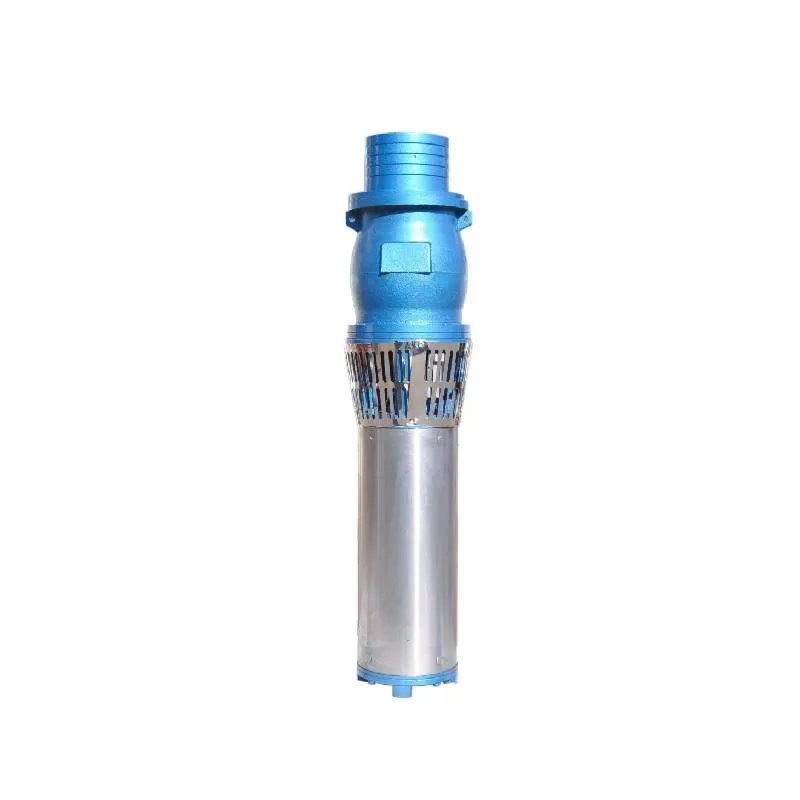Nov . 09, 2024 07:30 Back to list
Guidelines for Wiring a Submersible Well Pump Safely and Effectively
How to Wire a Submersible Well Pump A Step-by-Step Guide
If you have a submersible well pump, understanding how to wire it correctly is essential to ensure it operates efficiently and safely. This guide will walk you through the process of wiring a submersible well pump, covering the tools needed, safety precautions, and the steps to follow.
What is a Submersible Well Pump?
A submersible well pump is designed to be submerged in water, making it an effective solution for extracting water from deep wells. These pumps use a sealed motor that is placed below the water level, which helps to push water to the surface. Wiring this type of pump may seem daunting, but with the right knowledge, anyone can do it.
Tools and Materials Needed
Before you begin, gather the following tools and materials
- Wire cutters and strippers - Electrical tape - Multi-meter (for testing) - Junction box (if required) - Water-resistant wiring (typically polyethylene or thermoplastic wire) - A submersible pump with appropriate voltage rating - Connectors (wire nuts or terminal blocks)
Safety Precautions
1. Power Off Always turn off the power supply to the well pump circuit. This can prevent serious electrical shock or damage to the pump. 2. Read the Manual Familiarize yourself with the manufacturer’s instructions for your specific pump model. 3. Use Proper Gear Wear insulated gloves, safety glasses, and rubber-soled shoes to add an extra layer of safety.
Step-by-Step Wiring Procedure
how to wire submersible well pump

1. Prepare the Wiring - Cut the length of wire according to the depth of your well and the distance to the power source. - Typical submersible pumps may require three to four wires, including two power wires, a ground wire, and possibly a control wire.
2. Strip the Wires - Use wire strippers to remove about ¾ inch of insulation from the ends of the wires. Be careful not to damage the copper strands.
3. Connect the Wires - Power Wires Typically, you will connect the two hot wires (often black and red) to the corresponding terminals on the motor. These are the wires that carry the current to the pump. - Ground Wire Connect the ground wire (usually green or bare copper) to the grounding terminal on the pump to prevent any electrical faults. - For pumps with a control wire, this will usually connect to a control switch or pressure switch.
4. Use Connectors - Securely twist the wires together using wire connectors. Ensure that there are no exposed copper strands. If using wire nuts, make sure they fit snugly and are properly twisted.
5. Seal and Insulate - Wrap the wire connections with electrical tape to insulate and protect them from moisture. If the installation is at risk for water exposure, consider using heat-shrink tubing for additional protection.
6. Install a Junction Box (if necessary) - If your pump setup requires a junction box, install it above the wellhead, ensuring connections are accessible for maintenance. Connect the power supply wires to the junction box, following the same color-coding as your pump.
7. Test the Connection - Before powering up your system, use a multi-meter to check for continuity and ensure there are no shorts or wrong connections. This step helps ensure that your wiring is correct and safe.
8. Power On - Once everything is connected and tested, turn the power supply back on. Monitor the pump for any unusual noises or vibrations, which could indicate improper wiring or mechanical issues.
Conclusion
Wiring a submersible well pump involves careful preparation, understanding of electrical principles, and adherence to safety protocols. By following these steps and making sure to consult your manufacturer’s guidelines, you can successfully wire your submersible well pump and ensure it operates efficiently. If you feel uncomfortable or unsure at any stage, don't hesitate to seek professional help. Proper installation not only protects your investment but also maintains safe water supply for your needs.
-
Submersible Water Pump: The Efficient 'Power Pioneer' of the Underwater World
NewsJul.01,2025
-
Submersible Pond Pump: The Hidden Guardian of Water Landscape Ecology
NewsJul.01,2025
-
Stainless Well Pump: A Reliable and Durable Pumping Main Force
NewsJul.01,2025
-
Stainless Steel Submersible Pump: An Efficient and Versatile Tool for Underwater Operations
NewsJul.01,2025
-
Deep Well Submersible Pump: An Efficient 'Sucker' of Groundwater Sources
NewsJul.01,2025
-
Deep Water Well Pump: An Efficient 'Sucker' of Groundwater Sources
NewsJul.01,2025
-
 Submersible Water Pump: The Efficient 'Power Pioneer' of the Underwater WorldIn the field of hydraulic equipment, the Submersible Water Pump has become the core equipment for underwater operations and water resource transportation due to its unique design and excellent performance.Detail
Submersible Water Pump: The Efficient 'Power Pioneer' of the Underwater WorldIn the field of hydraulic equipment, the Submersible Water Pump has become the core equipment for underwater operations and water resource transportation due to its unique design and excellent performance.Detail -
 Submersible Pond Pump: The Hidden Guardian of Water Landscape EcologyIn courtyard landscapes, ecological ponds, and even small-scale water conservancy projects, there is a silent yet indispensable equipment - the Submersible Pond Pump.Detail
Submersible Pond Pump: The Hidden Guardian of Water Landscape EcologyIn courtyard landscapes, ecological ponds, and even small-scale water conservancy projects, there is a silent yet indispensable equipment - the Submersible Pond Pump.Detail -
 Stainless Well Pump: A Reliable and Durable Pumping Main ForceIn the field of water resource transportation, Stainless Well Pump has become the core equipment for various pumping scenarios with its excellent performance and reliable quality.Detail
Stainless Well Pump: A Reliable and Durable Pumping Main ForceIn the field of water resource transportation, Stainless Well Pump has become the core equipment for various pumping scenarios with its excellent performance and reliable quality.Detail
